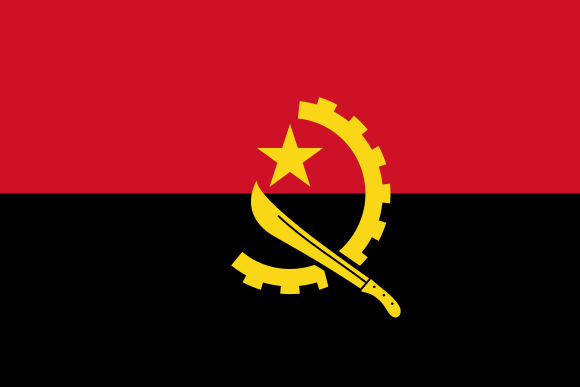At a glance
CDC works with partners in Angola to build sustainable public health capacity, strengthen laboratory systems and surveillance networks, deliver high-quality HIV and TB diagnostic, treatment, and prevention services, and respond swiftly to disease outbreaks at their source, preventing health threats from reaching the U.S.

Strategic focus
The U.S. Centers for Disease Control and Prevention (CDC) established a partnership with the Angola Ministry of Health (MOH) in 2002 to strengthen the national public health system. In 2004, CDC began building capacity within the MOH to respond to the HIV epidemic. CDC collaborates with the MOH, the Instituto Nacional de Luta Contra o SIDA’s (INLS), and the National Institute of Public Health to strengthen public health and clinical systems.
CDC supports the delivery of high-quality HIV testing and treatment services and helps respond to emerging public health threats. CDC's strategic focus is working with implementing partners to strengthen the public health workforce capacity and improve the provision of HIV clinical services by healthcare workers (HCWs) at sites supported by the President’s Emergency Plan for AIDS Relief (PEPFAR). Additionally, CDC aims to strengthen public health systems, particularly in the areas of laboratory and data use.
Read more about CDC's most recent key activities and accomplishments below.
Building public health capacity
- Developed a national HIV patient register at PEPFAR-supported points of service to reduce duplicate data and improve patients’ linkage to treatment and retention.
- Built the INLS monitoring and evaluation team’s capacity in HIV data collection and use to improve nationwide decision-making.
- Trained over 178 HCWs from 22 PEPFAR-supported facilities in HIV testing, treatment, retention, and youth-friendly services.
- Trained over 20 HCWs on strategies to provide and improve psychosocial support to people living with HIV.
Strengthening laboratory systems and networks
- Supported the expansion of testing capacity to develop laboratory quality assurance and management systems and build laboratory capacity to increase high-quality HIV diagnostic and management services.
- Facilitated the development of a national point of care early infant diagnosis (EID) testing package, established a transport network for samples from health facilities to laboratories, and implemented an electronic laboratory information system to send EID and viral load (VL) data to facilities for patients’ management.
- Trained 12 laboratory technicians to provide regular maintenance of GeneXpert machines, which strengthened both VL and TB testing for sites supported by PEPFAR.
HIV prevention and treatment
- Implemented patient-centered HIV programming in 22 health facilities across the four provinces of Benguela, Cunene, Huambo, and Lunda Sul.
- Maximized the impact of HIV testing at 22 PEPFAR-supported health facilities with index testing and implemented the “Test and Treat” program. This program aims to start patients newly diagnosed with HIV on antiretroviral therapy (ART) the same day they are diagnosed.
- Provided retention-focused technical assistance to health facilities and healthcare providers to ensure uninterrupted treatment.
- Facilitated key HIV treatment and laboratory guidelines in collaboration with the MOH and INLS, including:
- updated ART regimens to include Tenofovir Lamivudine Dolutegravir for adults and children;
- implemented multi-month dispensing of HIV treatment medicines to stable patients at PEPFAR-supported pharmacy sites to reduce treatment interruptions;
- revised national HIV laboratory procedures to improve testing efficiency; and
- approved pediatric Dolutegravir (pDTG) and pediatric Abacavir/Lamivudine/Dolutegravir (pALD) for children on ART.
Tuberculosis prevention and treatment
- Provided expertise to health facilities and healthcare providers with TB detection and care to ensure uninterrupted treatment.
By the numbers
HIV
Estimated HIV Prevalence (Ages 15-49)
Estimated HIV Deaths (Age≥15)
Reported Number Receiving Antiretroviral Therapy (Age≥15)
TB
Estimated TB Incidence
339/100,000 (2023)
7.9% (2023)
TB Treatment Success Rate
65% (2022)
